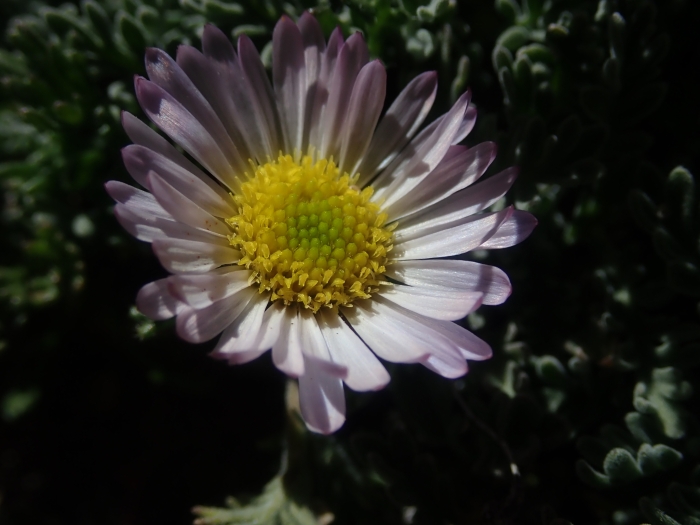Cutleaf Daisy
(Erigeron compositus)
Cutleaf Daisy (Erigeron compositus)
/
/

Nolan Exe
CC BY 4.0


















































Estimated Native Range
Summary
The Cutleaf Daisy is appreciated for its hardiness and ability to thrive in challenging environments, making it suitable for rock gardens, alpine collections, and as a ground cover in xeriscaped areas. Its modest water needs and preference for well-drained soils make it a low-maintenance choice for gardeners seeking drought-tolerant plants. While it prefers full sun, it can tolerate some shade, especially in hotter climates. There are no major disease problems associated with this plant, but it may require protection from overgrazing if deer are present in the area. Its non-aggressive nature makes it a good neighbor to other plants in a mixed planting.CC BY-SA 4.0
Plant Description
- Plant Type: Herb
- Height: 0.5-1 feet
- Width: 0.5-1 feet
- Growth Rate: Moderate
- Flower Color: White
- Flowering Season: Spring
- Leaf Retention: Evergreen
Growth Requirements
- Sun: Full Sun
- Water: Low, Medium
- Drainage: Medium, Fast
Common Uses
Bee Garden, Bird Garden, Butterfly Garden, Deer Resistant, Drought Tolerant, Groundcover, Low Maintenance, Rock Garden, Showy Flowers, Street Planting
Natural Habitat
native to alpine and subalpine areas, as well as dry rocky sites in the mountainous regions of western North America
Other Names
Common Names: Dwarf Mountain Fleabane, Trifid Mountain Fleabane, Compound Fleabane, Cut-Leaved Daisy, Cut-Leaved Fleabane, Fern-Leaved Fleabane, Vergerette À Feuilles Segmentées, Vergerette À Feuilles Divisées, Fernleaf Fleabane
Scientific Names: , Erigeron compositus, Erigeron compositus var. discoideus, Erigeron compositus var. glabratus, Erigeron compositus var. compositus, Erigeron compositus subsp. discoideus, Erigeron compositus var. multifidus, Erigeron compositus var. incertus, Erigeron multifidus, Erigeron compositus var. petraeus
GBIF Accepted Name: Erigeron compositus Pursh